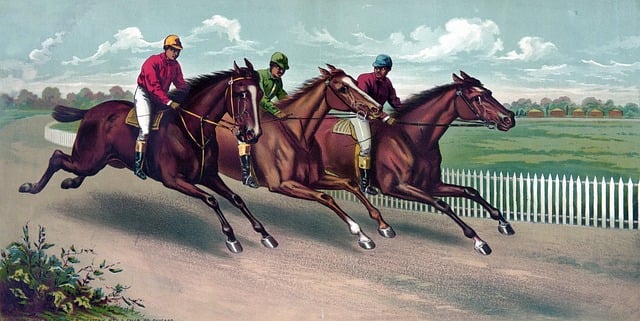 The Grand National has long been one of the most exciting and interesting events in horse racing in England. There are lots of people who find it dramatic to watch. With every year in the sport, new favourites are being made, rising to meet the incredibly high expectations of trainers, owners and fans. Compared with old favourites of the past, these newcomers show how the race has changed in terms of how people prepare, their style and the ultimate prestige and reputation of the horse itself.
The Grand National has long been one of the most exciting and interesting events in horse racing in England. There are lots of people who find it dramatic to watch. With every year in the sport, new favourites are being made, rising to meet the incredibly high expectations of trainers, owners and fans. Compared with old favourites of the past, these newcomers show how the race has changed in terms of how people prepare, their style and the ultimate prestige and reputation of the horse itself.
Past legends of the National
Not many can live up the famous Red Rum. Red Rum is the only horse to win the Grand National three times, including in 1973, 1974 and 1977. He was a household name and a horse racing hero due to his stamina and incredible consistency.
Other greats of years past include Foinavon in 1967 and Aldaniti in 1981, as well as jockey Bob Champion in what is often seen as one of the greatest sporting comebacks ever seen. These wins have become a part of racing folklore and remind the National fans that it is this unpredictability and excitement that make it great to follow.
Modern favourites rising
Today’s contenders face a slightly different challenge. Improvements in fences and racing regulations have been extensive, impacting the speed, performance and position of horses relative to other racehorses. Horses such as Tiger Roll, who won in 2018 and 2019 just as Red Rum did those years before, have become icons for modern times.
Recent winners, such as Noble Yeats in 2022, reflect the emergence of younger and more agile horses that can match wits with seasoned veterans. Aside from modern training and veterinary treatment, the sports and preparation methods used today mean that today’s modern favourites are much better-tuned athletes when compared to previous decades.
Evolution of the race
Throughout the entire history of the National, both the course layout and the conditions on the day of the race have been updated by the organisers. One introduction was Kittie fences, which have minimised the number of falls; in turn, this shifts attention toward how well prepared the horses are, how fast they can sprint during the race and in the final stretch.
These days, the Grand National is even more competitive than it used to be, with lots of well-prepared horses in the field, making it harder to people to be able to determine the favourite. With such a high number of competitive horses, some might consider these modern horses to be even more interesting than the horses of the past.
The cultural significance
Beyond the track, there is a place specially reserved for the Grand National in the British sports culture. It is one of the few races where not everyone attending is a regular follower of horse racing. This is why it was worthy of being honoured by being named a national event. The excitement of the race has endured for decades, and families pass down stories of legendary winners and those who came close.
The Grand National is more than just a race; it’s an experience that brings generations together as they share a common bond.
Resources for fans
To folks who are interested in getting to know the history of the Grand National, lists of the past and present champions are readily available. These records let fans compare the former legends with the current runners, allowing them to see how factors such as stamina, speed and strategic direction have evolved over the years.
Additionally, race fans can look to Betway, which has betting markets that provide an entire wealth of information on favourites and people’s shifting expectations before the races. While such predictions are based on form and opinion, the history of the Grand National teaches us that it is — and will likely remain — one of the most unpredictable races out there.
The role of the fans
The hold of the crowds has always been a part of the ongoing popularity of the race. Thousands of people worldwide have access to internet and television and are passionate about the sport. This loyalty means that the legacies of historical heroes such as the famous Red Rum and modern-day heroes continues to be part of the mythology regarding that event.
Conclusion
The Grand National has undergone huge modifications over the decades. However, it is still essentially the same; a physical challenge which tests stamina, expertise and endurance. However, direct comparison between legends of the past and present day offers provides a clue as to why the race has been a jewel of the horse-racing world.
From the golden age of Red Rum to the modern exploits of Tiger Roll, these heroes are part of an ever-accumulating story that ensures the event will make a lasting impact on the history of horse racing.